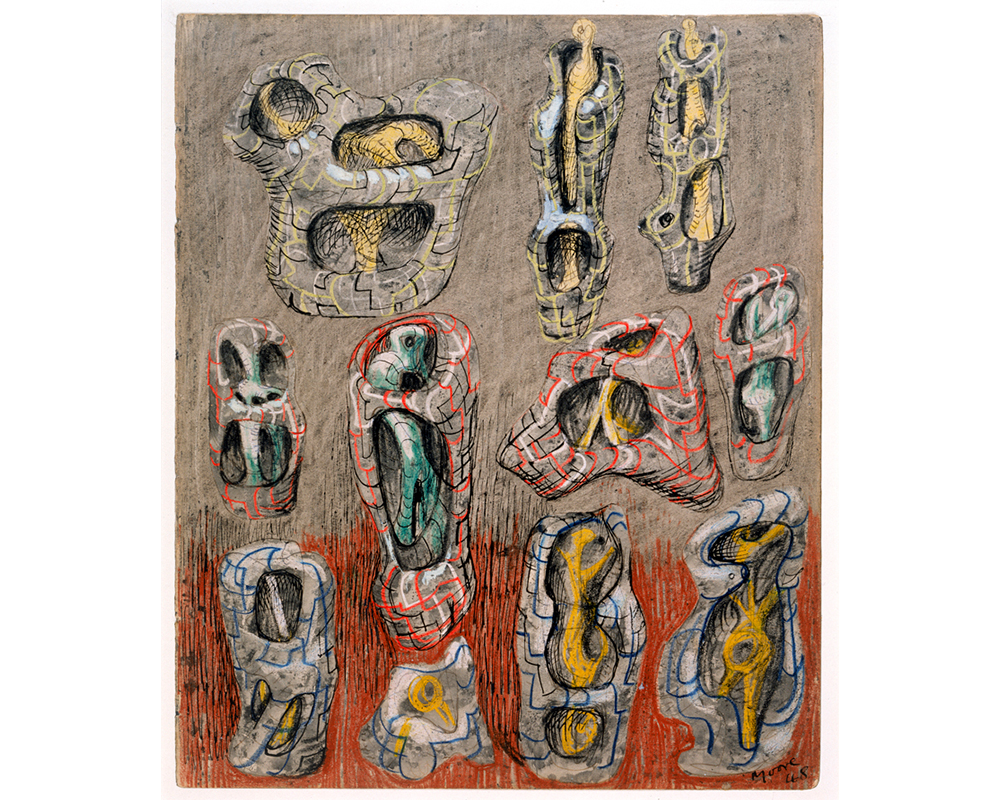
Internal/External
Guest blogger Maggie Kurkoski ’12 was the 2013-2015 Post-Baccalaureate Curatorial Fellow at the Smith College Museum of Art.
Henry Spencer Moore is best known for his monumental sculpture, but his two-dimensional work is likewise compelling. Sometimes he created them as finished works, as is the case with Prométhée, or his haunting ‘Shelter Drawings.’ He also sketched out his ideas for sculptures before he realized them in the flesh, so to speak.
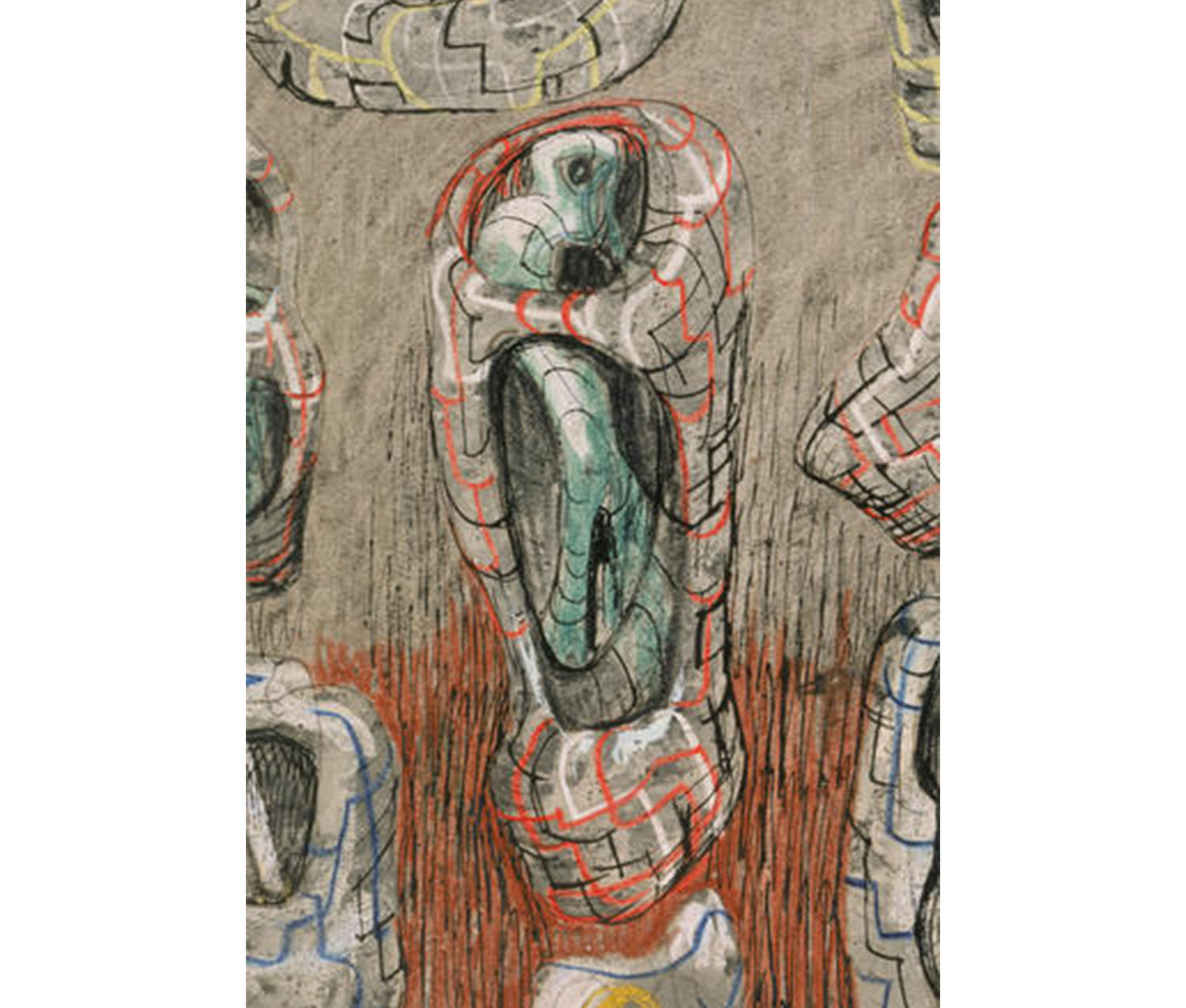
Detail of Internal and External Forms
The drawing above is one such study. Henry Moore is playing around with new and different ideas for sculpture, all circling around the idea of internal forms and external forms. The shapes are abstract—they do not seem to represent any known object or person.
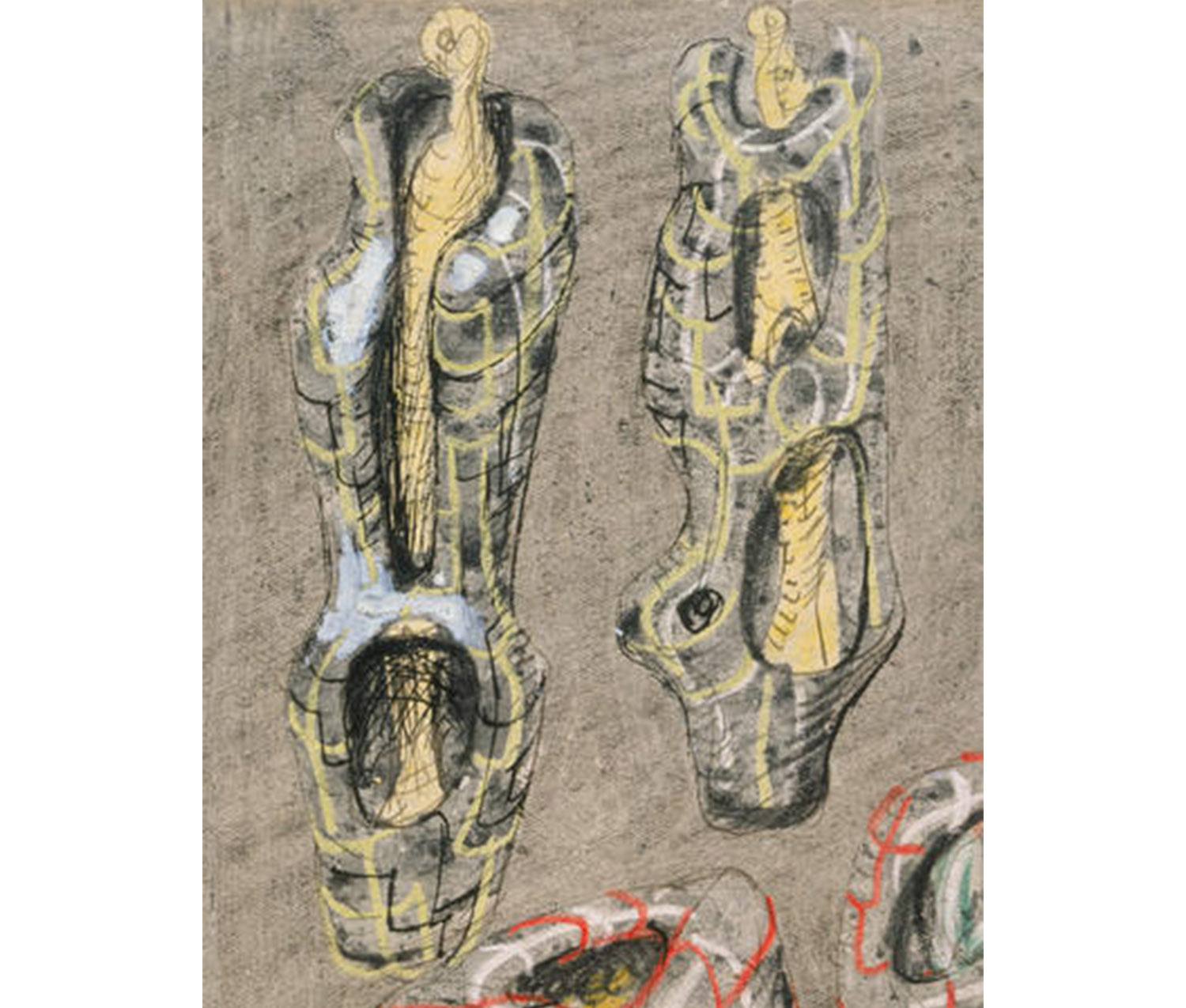
Detail of Internal and External Forms
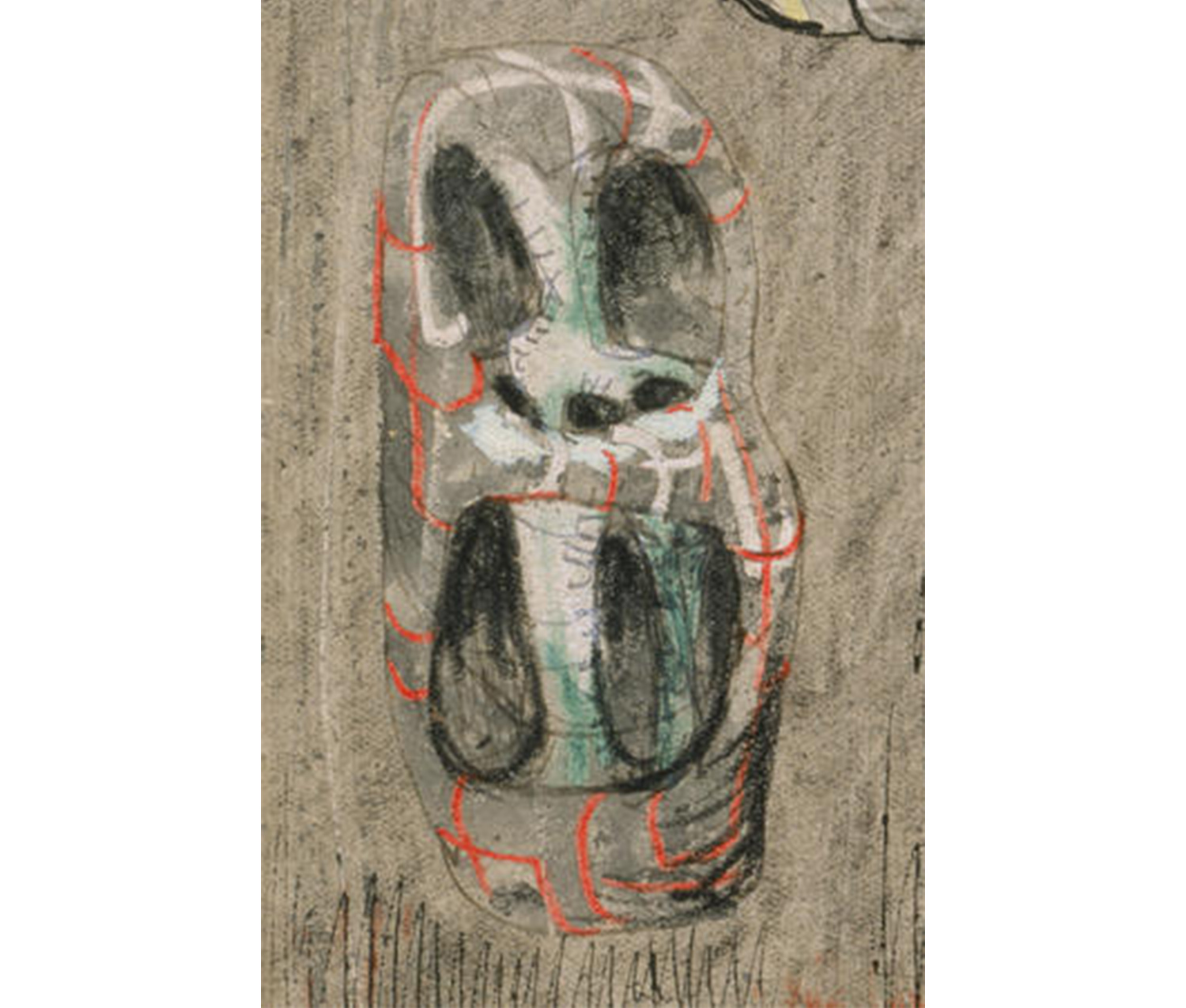
Detail of Internal and External Forms
Still, they are evocative of bigger ideas. About these works, Henry Moore said:
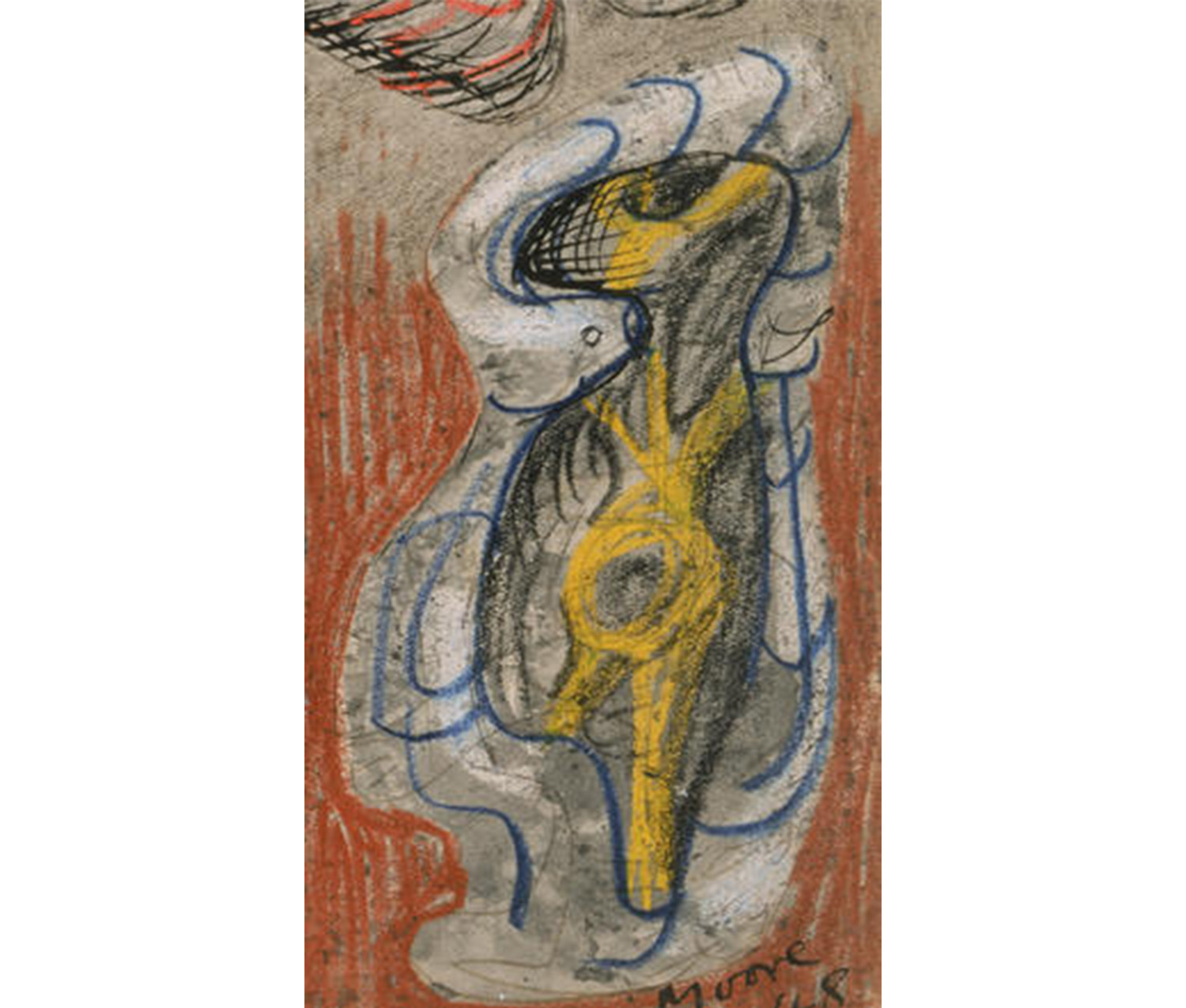
Detail of Internal and External Forms
This study was not created as a stand-alone work, and Moore went on to create many physical Internal/External Forms in wood and bronze. That said, the drawing is more than a diagram for other works. Bright pops of red, yellow and green stand out against a mostly gray surface, unlike the earth tones of his sculpture. Lines run along each form to define the contour of its surface. The composition is balanced. It’s really a work of art in its own right.
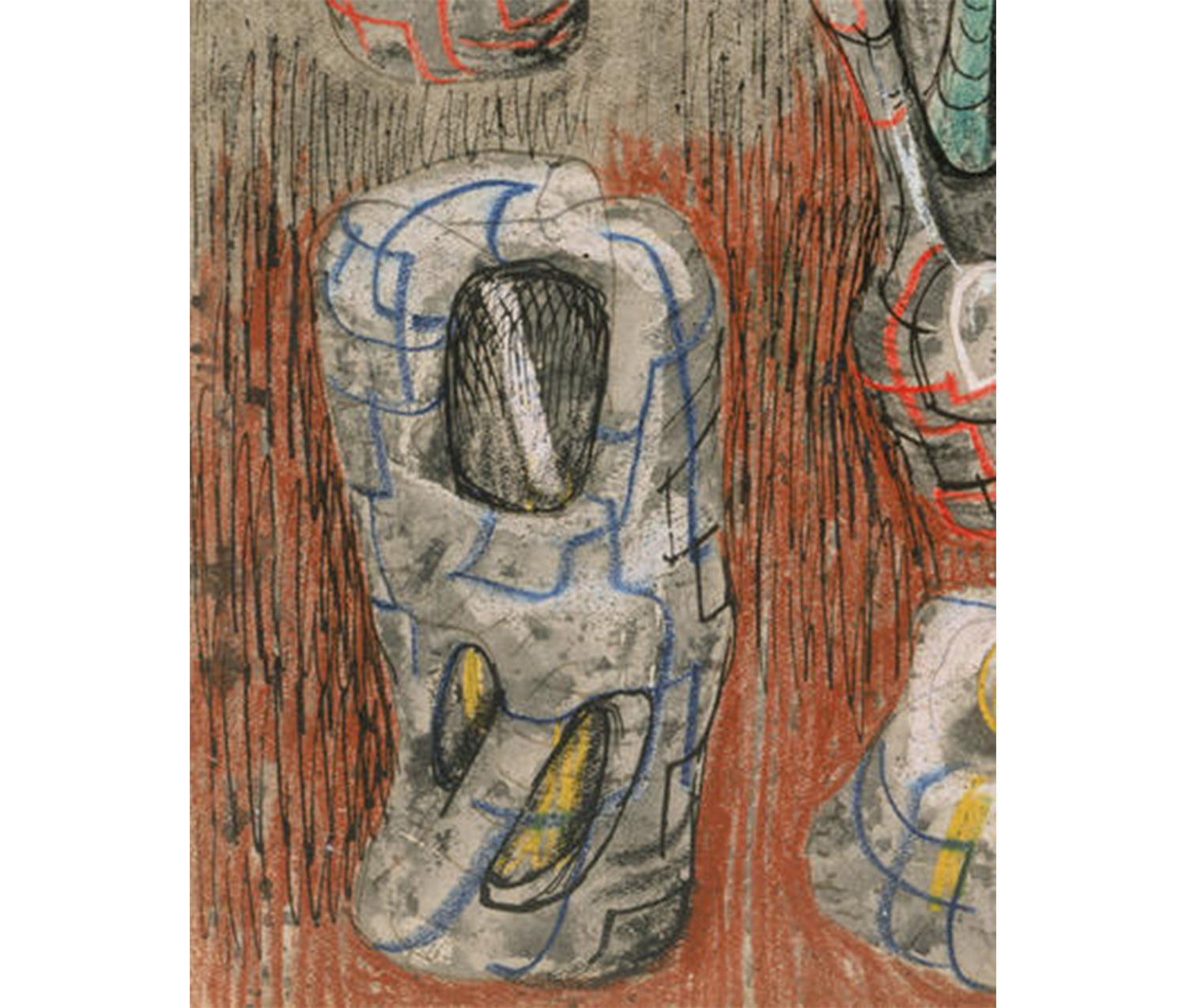
Detail of Internal and External Forms
The drawing first caught my eye as I was researching another series by Moore, the lithographs he produced for the artist’s book Prométhée. Do you recognize those shapes?
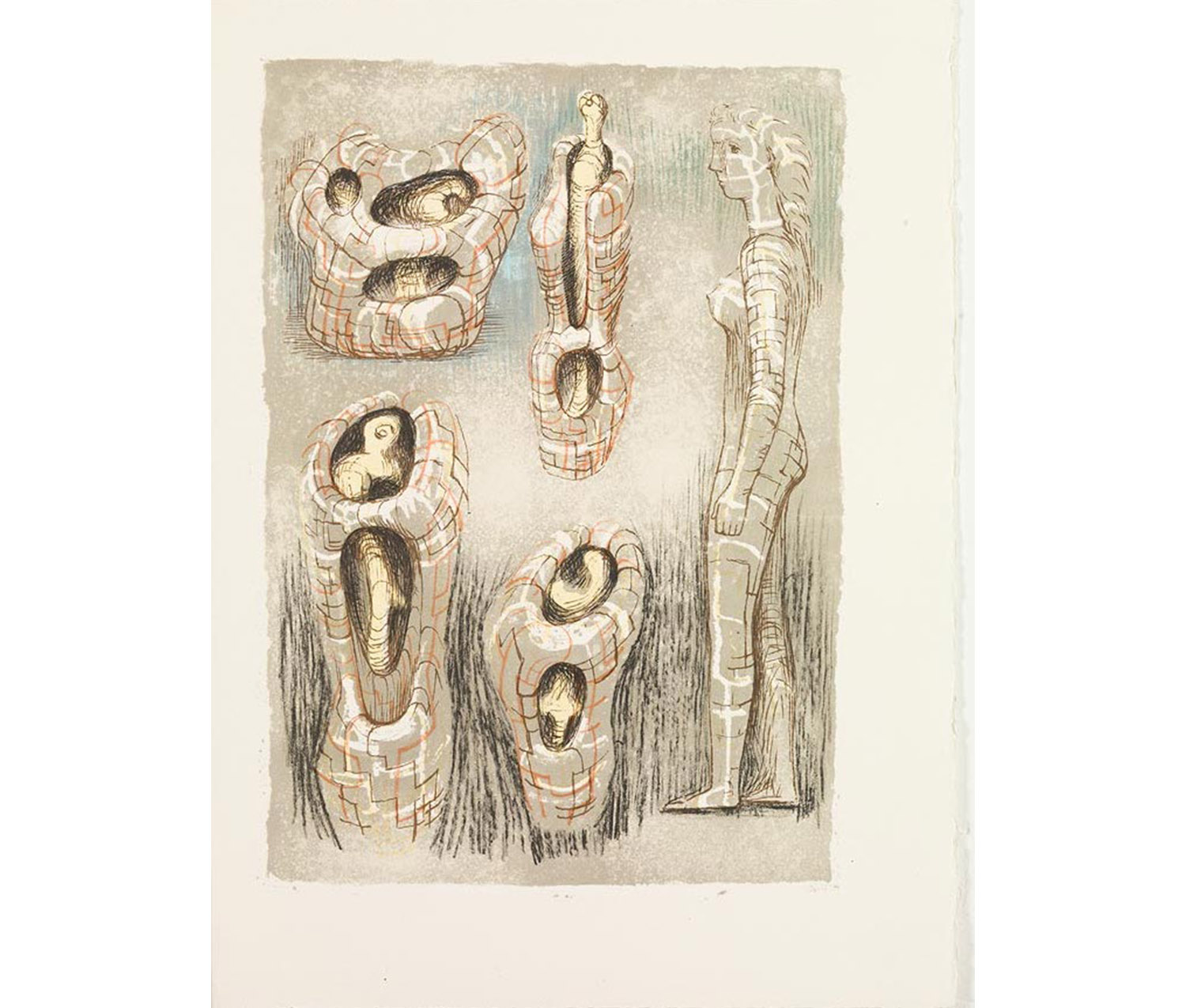
Henry Spencer Moore. English, 1898–1986. Promethée; Pandora, 1950. Lithograph on paper. Purchased. Photography by Petegorsky/Gipe. SC 1951.277.11.
Selections from Prométhée are currently on view in the Museum, recently moved to a third floor Works on Paper cabinet. It will remain on view through mid-September 2015.